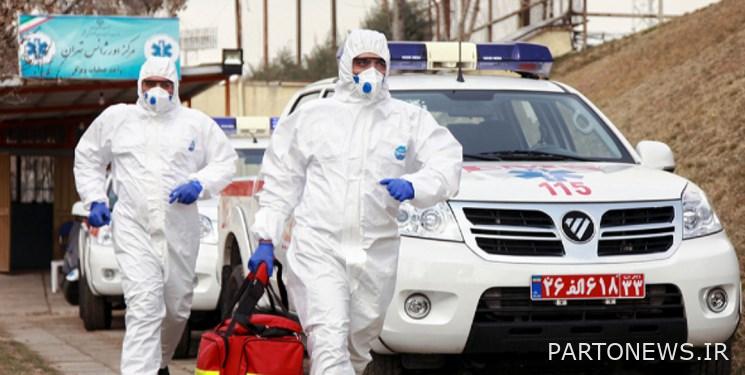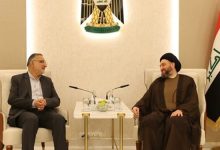The country’s emergency services are facing a shortage of troops / There is one ambulance for every 50,000 people in Iran

According to Fars News Agency’s health correspondent, Mojtaba Khaledi, the spokesman of the Emergency Organization in our Tehran program, Salamat Radio Tehran, said about the country’s emergency challenges and measures to overcome these challenges: . Locating and equipping emergency stations is one of the most important issues to provide services in the fastest difficult time. Manpower is one of the major challenges of this organization. There are currently 20,000 emergency medical personnel in the emergency department, but we need at least 30,000.
Benefit from the emergency services of the country
The country’s emergency spokesman added: “Fortunately, with the measures taken in the past few years, new ambulances entered the country and we have tried to ensure justice in health so that the ambulances used in Tehran are also used in remote and less privileged parts of the country.” We have tried to train emergency medical service experts who have an academic degree. In many countries, people who have only received training are used to provide emergency services, but our forces have a bachelor’s degree in emergency medicine.
Increase emergency helicopters from 5 to 50 aircraft
Referring to the impassable areas of Iran and the conditions of the four seasons of the country, he said: Iran has a diverse geography, at one point the temperature reaches more than 50 degrees and elsewhere below zero degrees Celsius, which requires various structures and equipment of the emergency. For areas of Iran that do not have access to health centers for months during the cold season; Despite the problems of sanctions, helicopters have been developed, the number of which has increased from 5 to 50 helicopters in recent years.
Special emergency services for heart and brain patients
Khaledi pointed out: The emergency work policy is moving towards making the emergency smarter. There are plans for heart patients and strokes that we hope to be able to use for the whole country so that everyone suffers from chest pain; The patient can be immediately referred to a heart surgeon by directing him to the operating room. This is also being done for strokes, and it has been established in metropolitan areas, and we hope it will spread to small towns as well.
Iran Emergency is up to date in terms of equipment and services
Emphasizing the lack of manpower and the number of bases, Khaledi called on the officials to pay more attention to this area of health services and said: “There are two people in the ambulance who have to provide medical services to the patient while driving and sometimes even have to drive themselves.” They also clean so that they can quickly return to the operation cycle. This is very difficult. For example, our colleagues in hospitals have fixed and specific jobs, and while at least 8 people are called to hospitals for critically ill patients, only 2 people are present in ambulances and emergencies.
Comparing Iran’s emergency with developed countries, he said: “Each emergency has three main characteristics of ambulance, equipment and manpower.” At present, the country’s ambulances are fully developed, and our manpower is also expert, and we do not have any problems in the equipment sector, because the ambulance has a complete pack.
The emergency room provides services to coronary patients
Rejecting the statements of some compatriots about the lack of emergency services for coronary patients, Khaledi said: The operation to transfer the first group of students to the country at the beginning of the outbreak of coronation was carried out by the country’s emergency services. Meanwhile, two years before the outbreak of the corona during the Hajj, some pilgrims returning to the country had contracted a corona-like illness, which has since depoted special equipment in the country’s emergency room, and at a time when the corona had just spread and many medical centers. They got into trouble. The country’s emergency services were able to do their job well.
There is one ambulance for every 50,000 people in Iran
The country’s emergency spokesman reminded: “We are currently facing a shortage of ambulances.” In our country, there is one ambulance for every 50,000 people. We tried to increase our facilities while we have to have one ambulance for every 12,000 people. Motor ambulance was a device that was added to the cycle of the country’s ambulances so that they could reach the injured person faster and do the necessary work until the ambulance arrived.
Emergency bases should be increased / we are ready to cooperate with municipalities
He said about the governor’s time that ambulances should reach over the injured: “According to the law, we should reach the injured in 14 minutes on the roads, but in metropolises and big cities this time is 8 minutes, but in Tehran the maximum time is 11 minutes.” It is about 6 minutes. In some situations, especially during rush hour traffic, because the location of the emergency base is not appropriate to the needs but is appropriate to urban conditions, has caused the ambulance to reach the top of the injured person for a long time.
The country’s emergency spokesman asked the mayors of metropolitan areas, especially the mayor of Tehran, to pay special attention to the location and urban furniture for emergency stations. The emergency team is also ready to work with the municipality to relocate and increase emergency bases.
Soon 3 vaccination centers will be added to the emergency vaccination centers
Khaledi said about the time of deployment of the emergency team in the vaccination centers: “We have 17 centers in Tehran, to which 3 more centers will be added.” Services will be provided from 8 am to 9 pm. We have also asked the Ministry of Health to open some bases around the clock, which will be done if agreed.
Reduce emergency telephone harassment during the corona
He announced the reduction of cases of telephone harassment for the emergency during the corona period and said: “Telephone harassment is one of the problems of the emergency.” Some people are not aware, but due to the limited answering capacity of emergency telephones; With any emergency phone call and busy line, a person who needs help and whose life is in danger may have to wait. With the increase in people’s empathy during the Corona period, the telephone harassment of these centers has decreased.
People with complete mobility impairment are vaccinated at home
Khaledi said about people who can not go to the centers for vaccination: the emergency has done two special things. The first group is people with mobility impairments for whom the vaccine is given by car. A group of people with physical-mobility problems are vaccinated out of turn in the centers, and people who are unable to attend the centers due to acute physical conditions such as complete paralysis of the limbs can benefit from the services of our colleagues by providing documents from their relatives. No. 115 is also at the service of these compatriots to inform our mobile unit colleagues by phone.
At the end of this radio conversation, referring to the marriage of two Fasa emergency personnel in the ambulance, he said: “People who marry emergency personnel will have a very difficult life because they have to be ready when people are on vacation and traveling.” .
End of message /
.

